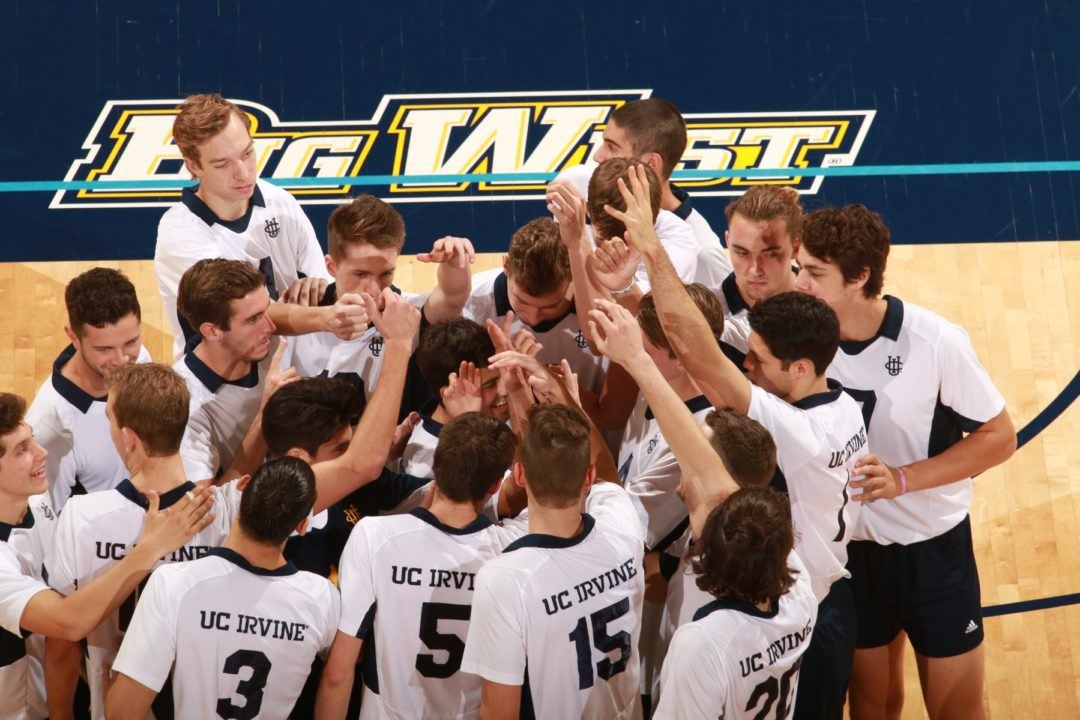The number of opportunities for men to play college volleyball has drastically increased in the new millennium, even though the number of Division I opportunities has been relatively stagnant.
According to the NCAA, the number of roster spots in college volleyball has grown from 1,183 in the 2000-2001 season to 2,197 in the 2015-2016 season. That includes a 153% increase in scholarship-less Division III.
In the NCAA, Division I and Division II programs play in a single unified league.
This is a bit of a recovery from a huge dropoff in opportunities between the early 1980s through the 1989-1990 season: the first decade after the NCAA officially recognized women’s sports. In that period, the number of men’s roster spots fell from 1,522 to 1,279, including a loss of 100 spots in Division I alone. Over that same period, roster sizes exploded from 13.8 to a peak of 19.1 players per team in 1991-1992.
Over the same period as the NCAA roster size data covers below, the number of Division I teams has fallen from 22 to 21, but Division II (17 to 25) and Division III (42 to 76) have exploded.
In total in the 2015-2016 season, 10.9% of total NCAA member institutions sponsored men’s volleyball. That’s an increase from the 8.4% that sponsored the sport in the 1981-1982 season.
By comparison, 95.6% of the NCAA’s member institutions sponsor indoor women’s volleyball for a total of 17,119 athletes. Beach volleyball had a total of 56 programs (5% of total members) and 909 total athletes in 2015-2016 – the first year in which the NCAA sponsored a national championship. That’s more than a 400% increase from the 2011-2012 season.
Opportunities to compete in NCAA men's volleyball have increased markedly at #NCAAD2 and #whyD3 schools over the past decade. #NCAAMVB pic.twitter.com/XkFSzp8N7R
— NCAA Research (@NCAAResearch) February 27, 2017

Leave a Reply